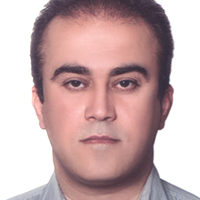Temporal-spatial changes of the trophic index (TRIXcs), the risk of eutrophication (UNTRIX) and the determination of affected areas using a spatial salinity pattern in the southern of Caspian Sea
The spatial salinity patterns which give a picture of the area affected by eutrophication and trophic status changes at the ecosystem. The aim of this study was to determine the area affected by freshwater eutrophication using trophic level (TRIXcs), the risk of eutrophication (UNTRIX) and the nutrient-salinity scatter diagram. Also, the data of the present study are compared with previous year of studies. This research was conducted during 2018 to 2019 in eight transects and at 5, 10 and 30 meter depths of Iranian coasts of southern Caspian Sea. The results showed that mean seasonal changes of TRIXcs and UNTRIXcs were 4.94-5.59 and 3.57-4.17, respectively, which the highest trophic level and risk of eutrophication was observed in summer season. In addition to, trophic level (TRIXcs) risk of eutrophication (NUTRIX=4.30) of near the coast (5m depth) were high. Mean of TRIXcs and UNTRIX between different regions (western, middle and eastern) were not significant. In the present study, the maximum amounts of ammonium and soluble silica near the west coast were recorded in Anzali transect and also under the influence of the largest river Sefidrud in the southern shores of the Caspian Sea, but the points with maximum NOx and phosphate values were observed in the east (Amirabad and Bandar-e-Turkmen transects). The nonlinear relationship between NOx, NH4, DIP and DSi with salinity indicates that river flow and water mixing were affected nutrient concentration and changes of trophic levels in the study area.
-
Water quality assessment of Qarasu River using IRWQIsc index
Eisa Hajiradkouchak, Behzad Rahnama*, Hasan Nasrollahzadeh, Ali Shahbazi, Reza Raeiji, Kazem Babaei
Journal of Engineering Geology, -
Effect of a nanocomposite coating (alginate/nanoclay) along with Eryngium caeruleum essence oil on the shelf life and meat quality of Litopenaeus vannamei shrimp
Vahid Ranjbar, Mojtaba Keshavarz, Hasan Nasrollahzadeh*
Iranian Scientific Fisheries Journal, -
Health risk assessment and levels of toxic metals in whitefish (Rutilus kutum) in the Caspian Sea
Yazdan Morady, *, Mina Seifzadeh, Maryam Rezaei, Gholamrezad Daryanabard, Sharareh Firuzkandian
Iranian Scientific Fisheries Journal, -
Age, growth and biomass of the golden gray mullet (Chelon aurata, Risso., 1810) in Iranian waters of the Caspian Sea
Gholam Reza Daryanabard*, Hassan Fazli, Sayed Abbas Hossaini, Akbar Poorgholami Moghadam
Iranian Scientific Fisheries Journal, -
Study on sediment quality parameters in the tributaries of the Sirvan River-Zhaveh Dam of Sanandaj (2020-2021)
Mahdieh Balouei, *, , Mohammad Kardar Rostami, Marzieh Rashidi Golrooye, Ahad Ahmadnezhad Chehreh
Journal of Earth Sciences, -
Determining the water quality of the Tajan River (Sari City) to select the release station for economic fish juveniles of the Caspian Sea (2022)
*, Nima Pourang, Reza Safari, , Mohammad Ali Afraei Banpei, Mohammad Javad Nematollahi, Mahdieh Baloei, Mohammad Kardar Rostami, Ahad Ahmadnezhad Chehreh
Journal of Earth Sciences, -
The effects of fish farms waste on water quality of Cheshmehkileh River
HamidReza Alizadeh Sabet, , Meysam Erfani
Journal of Aquatic Caspian Sea, -
Comparison of the effect of floating and sinking pellets feed on the growth performance of common carp (Cyprinus carpio) in round concrete ponds
Sahebali Ghorbani *, Daryush Parvaneh Moghadam, Rudabeh Rufchaie, Seyed Mohammad Salavatian, Hasan Maghsoudi Kohan, Afshin Amiri Sendesi,
Advanced Aquaculture Science Journal,




